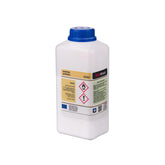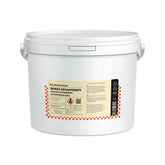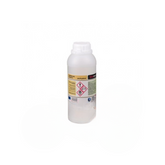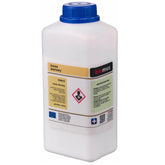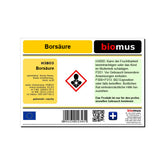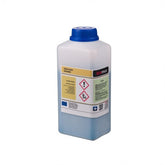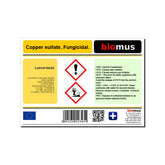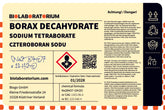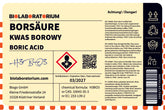Silver nitrate (AgNO₃) – Chemical properties, applications and precautions
Silver nitrate (AgNO₃) is a chemical compound that plays an important role in many areas of industry and science. In this blog post, we will take a closer look at the chemical properties, applications, and safety aspects of silver nitrate.
Chemical Properties of Silver Nitrate
Silver nitrate is a crystalline, colorless to slightly yellowish solid that is highly soluble in water. The chemical formula is AgNO₃, meaning the molecule consists of one silver ion (Ag⁺) and one nitrate ion (NO₃⁻).
The most important chemical properties of silver nitrate include:
- Oxidizing Power: Silver nitrate is a strong oxidizing agent and can readily undergo electron transfer reactions.
- Light Sensitivity: Silver nitrate is light-sensitive and decomposes under light exposure to metallic silver, resulting in a brown discoloration.
- Reactivity: Silver nitrate reacts with many other substances, such as halogens, sulfur compounds, or reducing agents.
These properties make silver nitrate a versatile chemical in a wide range of application areas.
Applications of Silver Nitrate
Due to its chemical properties, silver nitrate is used in numerous industrial sectors and research areas:
Photography and Imaging
Silver nitrate plays a central role in classical photography. It is used as a light-sensitive substance in photo emulsions to create latent images on films and photographic papers.
Medicine and Healthcare
In medicine, silver nitrate is used as a disinfectant, cauterizing agent, and for treating burns. It is also used in eye drops to prevent eye infections in newborns.
Chemical industry
Silver nitrate serves as a starting material for the production of other silver compounds used in the electronics industry, catalysis, and photochemistry.
Laboratory applications
In chemical and biological laboratories, silver nitrate is used to identify and detect certain ions and compounds. It is also used in titration methods.
Other applications
Other applications of silver nitrate include the production of matches, fireworks, inkjet printing, and metal surface finishing.
Precautions when handling silver nitrate
Although silver nitrate is versatile, caution must be exercised when handling it. Some important safety aspects are:
Health risks
Silver nitrate is toxic if swallowed and can cause burns on skin contact. Long-term exposure can lead to silver deposits in the skin (argyria), which causes irreversible blue discoloration of the skin.
Fire hazard
Silver nitrate itself is not flammable, but can cause fires through reactions with organic substances. Therefore, open flames and sparks should be avoided.
Environmental aspects
Wastewater and residues containing silver nitrate must be disposed of properly, as silver ions are toxic to aquatic organisms.
Protective measures
When handling silver nitrate, appropriate protective equipment such as lab coats, gloves, and safety glasses should be worn. Additionally, work should be carried out in well-ventilated areas.
Overall, silver nitrate is a useful but also potentially dangerous chemical that must be handled with due caution and care. However, by following safety regulations, it can be handled safely.
Conclusion
Silver nitrate is an important substance in industry and research due to its diverse chemical properties. Its applications range from photography to medicine. At the same time, handling silver nitrate requires special safety measures due to its toxicity and reactivity. However, with proper knowledge and appropriate protective measures, silver nitrate can be used safely and effectively.
